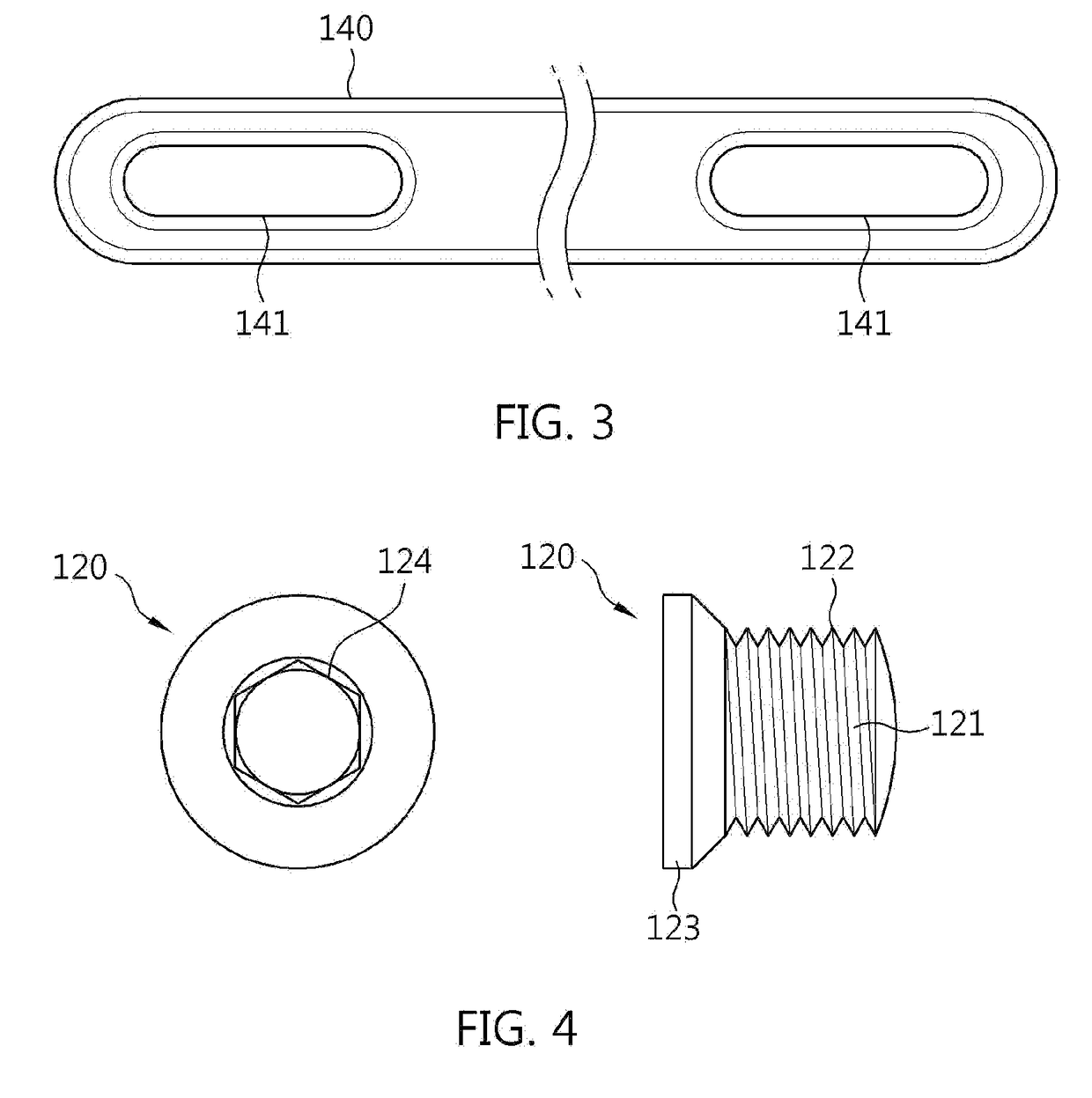Orthopedic apparatus for pectus excavatum
a pectus and orthopedic technology, applied in the direction of internal osteosynthesis, osteosynthesis devices, bone plates, etc., can solve the problems of affecting the function of internal organs located in the chest area, affecting the accuracy of sternum repair, and affecting the quality of life of the patient, so as to facilitate the procedure and simplify the component configuration. , the effect of accurate sternum repair
- Summary
- Abstract
- Description
- Claims
- Application Information
AI Technical Summary
Benefits of technology
Problems solved by technology
Method used
Image
Examples
first embodiment
[0053]An orthopedic apparatus for pectus excavatum, which will be described in the first embodiment, is used for repairing thorax deformity, and particularly, used for repairing pectus excavatum (also referred to as funnel chest or concave chest) or costal cartilage deformity.
[0054]As shown in FIGS. 1 to 5, the orthopedic apparatus for pectus excavatum according to the first embodiment of the present invention includes: a primary pectus bar 110 inserted behind a sternum; a secondary pectus bar 140 inserted in front of the sternum to be in parallel with the primary pectus bar 110; and a locking member 120 provided at a junction between the primary pectus bar 110 and the secondary pectus bar 140 to lock the primary pectus bar 110 to the secondary pectus bar 140.
[0055]The primary pectus bar 110 serves to push the sternum from the inside toward the outside of the sternum. In other words, the primary pectus bar serves as a structural support that supports the load of a concave portion, s...
second embodiment
[0103]An orthopedic apparatus for pectus excavatum, which will be described in the first embodiment, is used for repairing sternum and thorax deformity, and particularly, used for repairing pectus excavatum (also referred to as funnel chest), costal cartilage deformity, or pectus carinatum.
[0104]As shown in FIG. 10, the orthopedic apparatus for pectus excavatum according to the second embodiment of the present invention includes: a double pectus bar 10; and a locking means 40.
[0105]The double pectus bar 10 supports a concave or convex sternum by being behind inside and in front of the sternum. The double pectus bar 10 enables stable repair of the sternum 1 without rotation or positional change in the body by compressing the sternum 1 internally and externally.
[0106]The double pectus bar 10 includes: a primary pectus bar 20; a secondary pectus bar 30; and a locking bolt 35.
[0107]The primary pectus bar 20 is inserted behind the sternum 1, and serves to push the sternum 1 outward. The ...
PUM
 Login to View More
Login to View More Abstract
Description
Claims
Application Information
 Login to View More
Login to View More - R&D
- Intellectual Property
- Life Sciences
- Materials
- Tech Scout
- Unparalleled Data Quality
- Higher Quality Content
- 60% Fewer Hallucinations
Browse by: Latest US Patents, China's latest patents, Technical Efficacy Thesaurus, Application Domain, Technology Topic, Popular Technical Reports.
© 2025 PatSnap. All rights reserved.Legal|Privacy policy|Modern Slavery Act Transparency Statement|Sitemap|About US| Contact US: help@patsnap.com



